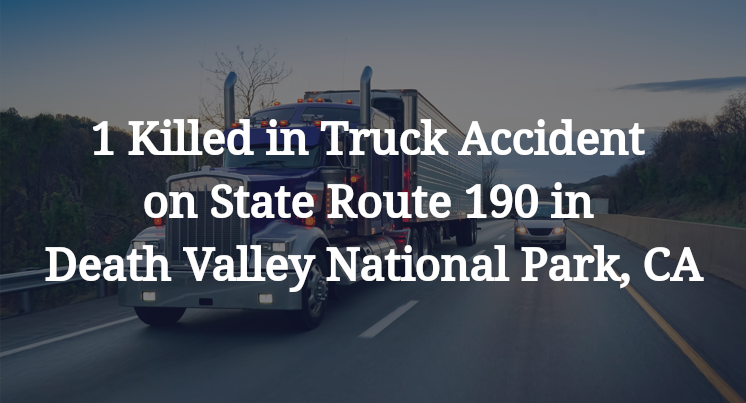1 Killed in Truck Accident on State Route 190 in Death Valley National Park, CA
Death Valley National Park, CA — May 20, 2025, one person was killed in a truck accident at about 2:15 p.m. on State Route 190 at Emigrant Junction.
Authorities said a 2024 International semi-truck crashed into a historic building after its brakes apparently failed. The crash spilled diesel fuel and a dry form of sodium sulfate mined nearby.

The truck driver, a 50-year-old Louisiana man whose name has not been made public yet, died in the crash, according to authorities.
Authorities have not released any additional information about the crash between Stovepipe Wells and Towne Pass.
Commentary by Attorney Michael Grossman
When most people hear that a semi-truck crashed into a building after “its brakes failed,” the natural response is to assume it was just an unfortunate accident, something no one could have predicted or prevented. But from a legal perspective, brake failure is never just a throwaway line. It raises a critical question: Why did the brakes fail in the first place?
We’re told the truck was hauling sodium sulfate and that it also spilled diesel fuel. That means this wasn’t some off-duty rig or light load. It was a working commercial truck hauling hazardous and heavy materials on a steep and remote road. That combination makes the condition of the truck’s brakes, and the systems designed to keep them working under pressure, an especially important area for scrutiny.
Here’s what we don’t yet know, but absolutely need to find out:
- Was this an equipment issue or a maintenance failure? Brakes don’t usually “fail” without warning. If the truck was properly maintained, they shouldn’t have failed at all. That means investigators should be looking at maintenance logs, repair records and inspection history. If this truck’s brakes hadn’t been serviced properly, that could point to negligence on the part of the trucking company or whoever was responsible for the truck’s upkeep.
- Was the route appropriate for this truck? State Route 190 through Death Valley isn’t just scenic; it’s rugged and mountainous. If a truck like this wasn’t equipped or permitted for that route, that’s a problem. Route planning isn’t a minor logistical issue. It’s often the first link in a chain of bad decisions that ends in disaster.
- Was the cargo loaded properly? Sodium sulfate in dry form is a dense powder, and it can significantly affect a vehicle’s braking ability depending on how it’s distributed and secured. An overloaded or improperly balanced truck is more likely to experience brake overheating, especially on downhill grades.
- Was the driver properly trained for this terrain and cargo? Driving through desert mountain passes with a heavy load isn’t like cruising the interstate. If this driver wasn’t adequately trained — or worse, if he voiced concerns that were ignored — then the company might bear a larger share of responsibility than it first appears.
Too often, authorities stop investigating once a mechanical failure is identified. But in my experience, brake failure isn’t a root cause; it’s a symptom. It’s the end result of a decision, or more likely, a string of decisions that went unchecked. If no one asks the right questions, then no one gets held accountable, and the same thing is likely to happen again.
Key Takeaways:
- “Brake failure” demands deeper investigation, not just of the brakes, but of maintenance, route planning and load distribution.
- The truck’s maintenance records, engine control module (ECM) data and cargo documentation will be critical in determining what really happened.
- Death Valley’s terrain places extra demands on trucks, making proper planning and equipment all the more essential.
- Whether the driver was adequately trained for the cargo and route remains an open and urgent question.
- Meaningful accountability is only possible when all contributing factors, not just mechanical ones, are thoroughly investigated.

“These are essential reads for anyone dealing with the aftermath of a truck wreck”– Attorney Cory Carlson